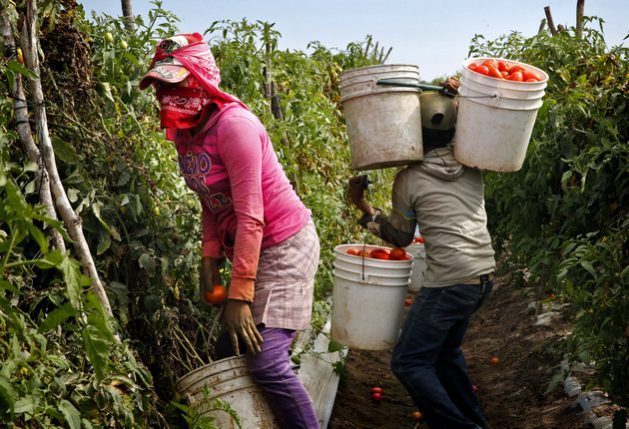Call It ‘Old’, ‘Contemporary’, ‘Modern’ or Whatever: It Is Slavery

MADRID, Dec 01 (IPS) - No matter what it is called -- it is the abhorrent daily life of a billion enslaved humans. The real number of “modern” slaves is understandably unknown. The International Labour Organisation (ILO) estimates that more than 40 million people worldwide are victims of modern slavery.
Although modern slavery is not defined in law, it is used as an umbrella term covering practices such as forced labour, debt bondage, forced marriage, and human trafficking, it says.
But this figure of 40 million sounds very far away from being accurate. Why? For instance, ILO cites forced marriage as one of the key components of modern slavery. However, there are 800 million child-girls forced to be married.
ILO also includes child forced labour as another key component of slavery. But the UN estimates that there are 160 million children victims of child forced labour.
In fact, the very same world organisation states that more than 150 million children are subject to child labour, accounting for almost one in ten children around the world.
Let alone the number of victims of smuggling and trafficking in human beings who are exploited and recruited as child-soldiers in armed conflicts hitting several developing countries.
One billion slaves
Consequently, only these two figures combined raise the number of ‘modern slaves’ to nearly one billion.
According to the UN, slavery essentially refers to situations of exploitation that a person cannot refuse or leave because of threats, violence, coercion, deception, and/or abuse of power.
Marking the 2021 International Day for the Abolition of Slavery on 2 December, the world body says that slavery is not merely a historical relic.
Coincidently, the International Day for the Abolition of Slavery marks the date of the adoption, by the UN General Assembly, of the United Nations Convention for the Suppression of the Traffic in Persons and of the Exploitation of the Prostitution of Others on 2 December 1949.
The focus of this Day is on eradicating contemporary forms of slavery, such as trafficking in persons, sexual exploitation, the worst forms of child labour, forced marriage, and the forced recruitment of children for use in armed conflict, the UN remarks.
Main Forms of Modern Slavery
Slavery has evolved and manifested itself in different ways throughout history. Today some traditional forms of slavery still persist in their earlier forms, while others have been transformed into new ones, according to the International Day for the Abolition of Slavery.
“The UN human rights bodies have documented the persistence of old forms of slavery that are embedded in traditional beliefs and customs. These forms of slavery are the result of long-standing discrimination against the most vulnerable groups in societies, such as those regarded as being of low caste, tribal minorities and indigenous peoples.”
Forced labour
Alongside traditional forms of forced labour, such as bonded labour and debt bondage there now exist more contemporary forms of forced labour, such as migrant workers, who have been trafficked for economic exploitation of every kind in the world economy: work in domestic servitude, the construction industry, the food and garment industry, the agricultural sector and in forced prostitution.
Child labour
Globally, one in ten children works. The majority of the child labour that occurs today is for economic exploitation. That goes against the Convention on the Rights of the Child, which recognises “the right of the child to be protected from economic exploitation and from performing any work that is likely to be hazardous or to interfere with the child’s education, or to be harmful to the child’s health or physical, mental, spiritual, moral or social development.”
All this in addition to children pushed into begging by criminal groups, just as an example.
Trafficking
According to the Protocol to Prevent, Suppress and Punish Trafficking in Persons Especially Women and Children, trafficking in persons means the recruitment, transportation, transfer, harbouring or receipt of persons, by means of the threat or use of force or other forms of coercion for the purpose of exploitation.
Prostitution, servitude, removal of organs…
“Exploitation includes prostitution of others or other forms of sexual exploitation, forced labour or services, slavery or practices similar to slavery, servitude or the removal of organs. The consent of the person trafficked for exploitation is irrelevant and if the trafficked person is a child, it is a crime even without the use of force.”
And there is an unquantified number of victims of debt-slavery, which is more widely spread in South Asia and Sub-Saharan Africa.
In view of the above, there would be many more slavery victims than the official estimates.
© Inter Press Service (2021) — All Rights Reserved. Original source: Inter Press Service
 Global Issues
Global Issues